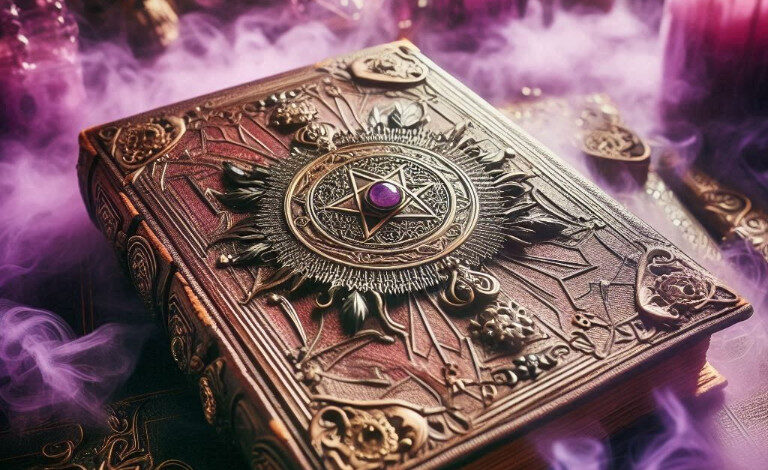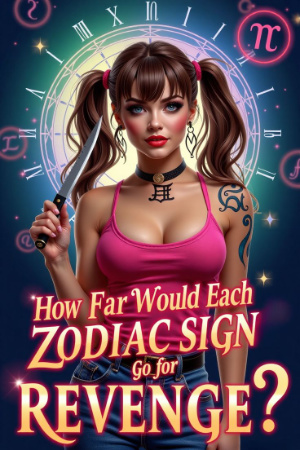
Witchcraft has been a part of human history for centuries, weaving its way through folklore, religion, and the everyday lives of those who practiced it. At the heart of witchcraft lies the power of words—spells, incantations, and chants that have been whispered, spoken, and sung to invoke magic. These incantations are not just words; they are the essence of intention, belief, and energy, crafted to bring about change in the world around us.
The following list delves into some of the most famous witch incantations, known for their potency and connection to ancient traditions. Each spell carries with it a story, a purpose, and a unique vibration that has resonated through time. Whether you’re a seasoned practitioner or simply curious, these incantations offer a glimpse into the magical world where words hold the power to transform reality.
The Most Powerful Witch Incantations of All Time

1. Abracadabra (Ah-bra-ka-DAH-bra)
Purpose: Protection from illness and harm
Description & Origin: “Abracadabra” is perhaps the most recognizable incantation in the world, often used in modern magic shows. However, its origins date back to ancient times, when it was believed to ward off illness and evil spirits. The word was typically written in a triangular pattern on amulets, with the letters disappearing one by one as the illness was thought to diminish. This incantation likely originates from the Aramaic phrase “Avra Kedabra,” meaning “I will create as I speak,” emphasizing the power of words in manifesting change.
2. Hocus Pocus (HOH-kus POH-kus)
Purpose: To deceive or create illusions
Description & Origin: “Hocus Pocus” is another well-known phrase, often associated with trickery and illusion. Though now synonymous with stage magic, it was originally used by magicians in the 17th century during performances, possibly derived from the Latin phrase “Hoc est corpus,” meaning “This is the body,” which was part of the Christian Eucharist. Over time, the phrase was adapted into a magical chant, symbolizing the power to deceive or alter perception.
3. Anitay Nalkri (Ah-nee-tay Nahl-kree)
Purpose: To call upon the elements
Description & Origin: This incantation, less known in popular culture but highly respected in various traditions, calls upon the powers of the four classical elements—earth, air, fire, and water. The words are believed to have roots in ancient Druidic practices, where nature was revered, and the elements were seen as powerful entities. “Anitay Nalkri” is often recited during rituals to invoke the energies of the elements, seeking balance and harmony in the natural world.
4. Alakazam (Ah-la-ka-ZAM)
Purpose: To bring something into existence
Description & Origin: “Alakazam” is a playful yet powerful incantation used in modern-day magic, especially in the realm of entertainment. However, its origins are thought to be from Arabic, possibly derived from the phrase “Al Qasam,” meaning “the oath.” The spell is used to bring something into being, whether it’s an object, a situation, or a result, highlighting the belief that words can shape reality.
5. Sator Arepo Tenet Opera Rotas (SAH-tor AH-reh-po TEH-net OH-peh-ra ROH-tas)
Purpose: Protection and to reverse evil
Description & Origin: This ancient Latin palindrome, known as the “Sator Square,” has been found in various locations across Europe, from Roman ruins to early Christian sites. The phrase, which reads the same forwards and backwards, is considered a protective charm, thought to have the power to ward off evil, bring protection, and even reverse curses. The exact meaning of the phrase remains a mystery, adding to its mystique and power in magical practices.
6. By the Pricking of My Thumbs (By the PRICK-ing of My THUMBS)
Purpose: To foresee or sense danger
Description & Origin: This incantation is drawn from Shakespeare’s Macbeth, where it is spoken by the three witches. The phrase is used to predict or sense approaching danger or trouble. While the origin lies in literature, the concept of physical sensations as omens is deeply rooted in folklore, where witches and wise folk would often use such feelings as a warning of what’s to come.
7. As I Will, So Mote It Be (As I WILL, So MOHT It Be)
Purpose: To affirm intentions and seal spells
Description & Origin: Often used at the end of a spell or ritual, “As I Will, So Mote It Be” is a powerful affirmation of the witch’s intent. The phrase “So mote it be” dates back to the Freemasons and other esoteric traditions, where it was used to close meetings or rituals, similar to “Amen” in Christian prayers. The incantation is a statement of belief that what has been willed shall come to pass, reinforcing the power of intention in magical practice.
8. Double, Double Toil and Trouble (DUB-ble, DUB-ble TOYL and TRUB-ble)
Purpose: To cause chaos or trouble
Description & Origin: Another famous line from Shakespeare’s Macbeth, this incantation is chanted by the three witches as they brew a potion. The phrase has become synonymous with witchcraft and is often used in popular culture to represent spells that stir up mischief or chaos. Though rooted in fiction, it reflects the traditional belief in the power of words to create real-world effects, whether for good or ill.
9. Open Sesame (OH-pen SES-uh-mee)
Purpose: To unlock or reveal hidden things
Description & Origin: Made famous by the tale of Ali Baba and the Forty Thieves in One Thousand and One Nights, “Open Sesame” is an incantation used to open a magical door to hidden treasure. The phrase has since been adopted into modern usage to symbolize unlocking something that is otherwise inaccessible. The exact origin of the phrase is unclear, but it is believed to relate to the power of spoken words to reveal or unlock secrets.
10. Light as a Feather, Stiff as a Board (LITE as a FEH-thur, STIF as a BORD)
Purpose: Levitation
Description & Origin: This incantation is a popular party game among teenagers, where participants chant the phrase while attempting to levitate a person lying flat. Though often seen as just a game, the incantation taps into ancient beliefs about the power of collective energy and intention. The origins are unclear, but similar levitation rituals have been recorded in various cultures, making this a fascinating glimpse into how even the simplest words can carry magical weight.
11. Klaatu Barada Nikto (KLAH-too Bah-RAH-dah NEEK-toh)
Purpose: To halt or command
Description & Origin: First popularized in the 1951 science fiction film The Day the Earth Stood Still, this incantation was used to command an alien robot to stop its destructive actions. While its origins lie in Hollywood, the phrase has since entered the lexicon of witchcraft and pop culture as a powerful command to halt or control forces that may be beyond human understanding. The exact meaning is ambiguous, adding to its mysterious allure.
12. Wingardium Leviosa (Win-GAR-dee-um Lev-ee-OH-sa)
Purpose: Levitation of objects
Description & Origin: Made famous by the Harry Potter series, “Wingardium Leviosa” is a spell used to make objects levitate. Although a product of modern fiction, it has become a beloved incantation among fans and has inspired real-life witches to create their own levitation spells. The phrase itself is derived from Latin roots, with “wing” symbolizing flight and “leviosa” meaning “to lift.”
13. Eko Eko Azarak (EH-koh EH-koh AZ-ah-rak)
Purpose: Summoning spiritual forces
Description & Origin: This ancient chant is often used in modern Wiccan rituals to call upon spiritual entities or deities. The exact origin of “Eko Eko Azarak” is unknown, but it is believed to be an invocation to the god and goddess, possibly dating back to pre-Christian pagan traditions. The chant has been popularized in books and films about witchcraft, making it a staple in rituals that seek to connect with the divine.
14. In Nomine Dei (In NOH-mee-neh DEH-ee)
Purpose: Protection or invocation of divine power
Description & Origin: This Latin phrase translates to “In the name of God” and has been used in various religious and magical practices to invoke divine protection or power. While often associated with Christian exorcisms, it has also been adopted by some witches who work within or alongside Christian traditions. The phrase carries a strong sense of authority and sacredness, making it a potent incantation in times of need.
15. Candle, Flame, Burn Bright (CAN-dul, FLAME, BURN BRITE)
Purpose: To enhance focus or clarity
Description & Origin: This simple incantation is often used in candle magic to enhance focus, clarity, or to strengthen a spell. The repetition of the words “burn bright” is believed to amplify the power of the flame, which in turn strengthens the intention behind the spell. Candle magic has roots in many ancient cultures, and this chant draws from the universal symbolism of fire as a source of light, warmth, and transformation.
16. Anu Ra Sha (AH-noo RAH shah)
Purpose: Healing and rejuvenation
Description & Origin: “Anu Ra Sha” is an ancient healing incantation, believed to be derived from ancient Egyptian or Sumerian traditions. The chant is used to invoke the energies of the sun (Ra) for healing and rejuvenation, drawing upon the life-giving power of light and warmth. This incantation is often whispered or sung over someone who is ill or in need of physical or spiritual healing.
17. Lumos (LOO-mos)
Purpose: To create light
Description & Origin: Another spell popularized by the Harry Potter series, “Lumos” is used to produce light from a wand or other object. Though fictional, the concept of using an incantation to create light is ancient, with similar spells and chants appearing in various magical traditions. The Latin root “lumen” means “light,” and “Lumos” has become a symbol of illumination, both literally and metaphorically.
18. Samhain Circle Cast (SOW-en SIR-kul KAST)
Purpose: To create a sacred space
Description & Origin: This incantation is used in Wiccan and pagan rituals to cast a circle of protection and create a sacred space for rituals, particularly during Samhain, the festival marking the end of the harvest season and the beginning of winter. The words are often accompanied by the drawing of a circle with a wand, knife, or hand, and serve to protect those within from outside influences while also focusing the energy of the ritual.
19. Bibbidi-Bobbidi-Boo (BIB-bih-dee BOB-bih-dee BOO)
Purpose: Transformation and enchantment
Description & Origin: Popularized by Disney’s Cinderella, “Bibbidi-Bobbidi-Boo” is a playful incantation used by the Fairy Godmother to transform Cinderella’s rags into a gown. Though it originates from a children’s film, the chant captures the essence of transformation magic, where the ordinary becomes extraordinary. Its whimsical nature has made it a favorite in pop culture, symbolizing the power of belief and magic in everyday life.
20. Exorcisamus Te (Ex-or-si-SAH-mus Tay)
Purpose: Exorcism and banishment
Description & Origin: This powerful Latin incantation, meaning “We exorcise you,” is used in the Roman Catholic rite of exorcism to banish evil spirits. The phrase has been used for centuries by priests and has also found its way into magical practices, particularly those focused on banishment and protection. Though rooted in religious tradition, it underscores the universal belief in the power of words to command and repel malevolent forces.
Final Musings
Incantations have been a cornerstone of witchcraft for as long as magic has been practiced. These words, though sometimes simple, carry with them the weight of intention, belief, and tradition. Whether drawn from ancient texts, whispered in secret, or passed down through generations, each incantation has its place in the tapestry of magic.
As we continue to explore and understand the power of these famous incantations, we are reminded that words hold an immense power. They can heal, protect, deceive, or bring about change, depending on how they are used. So, whether you’re reciting an ancient spell or crafting your own, remember that the magic lies not just in the words, but in the intention behind them.




